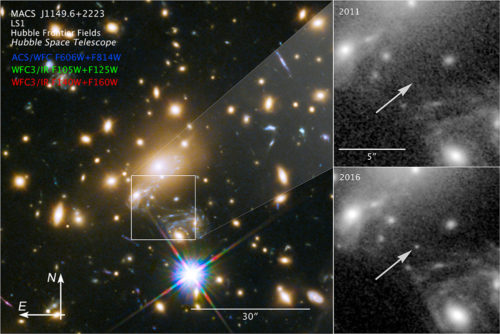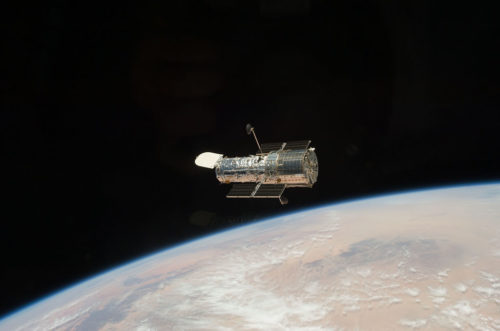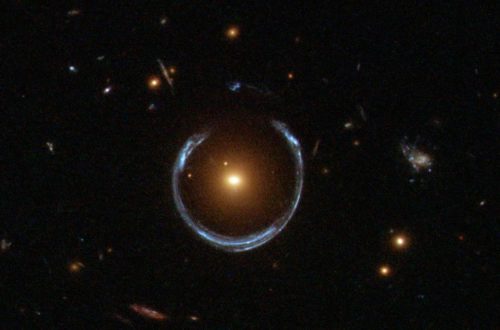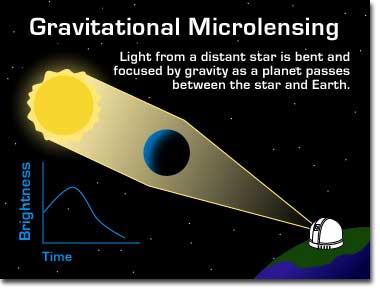Minneapolis, Minnesota —(Map)
Scientists have taken pictures of a star that is farther away than any single star ever seen. They were only able to see the star because gravity made it look bigger.
The star, which has been called “Icarus”, is nine billion light-years away. A light-year is a very long distance – about 6 trillion miles (6,000,000,000,000 miles). That’s how far light can travel in one year in space. This means that the star is about 54,000,000,000,000,000,000,000 (54 sextillion) miles away.

In 2011, without gravity’s help, it could not be seen.
(Source: NASA, ESA, and P. Kelly (University of Minnesota), via Wikimedia Commons.)
Icarus was created when the universe was very young. The star was a blue “supergiant” – much, much bigger and brighter than the sun. It took the light from the star about 9 billion years to reach the earth. It may seem strange, but the star is not even there any more. The star is gone, but the light it made is still traveling through space.
Patrick Kelly worked with other scientists and NASA to spot the star. They used a telescope that NASA had put into space, called the Hubble Space Telescope.

(Source: NASA, via Wikimedia Commons.)
Mr. Kelly said, “This star is at least 100 times farther away than the next…star we can study.” Icarus was so far away that the scientists needed more than just the Hubble Telescope to spot it.
The scientists were able to see the star because it was magnified by gravity. Gravity doesn’t just pull things toward each other; it can also bend light. When the light gets bent, it can make things look bigger. Scientists call this “gravitational lensing”.

(Source: Lensshoe_hubble.jpg: ESA/Hubble & NASAderivative work: Bulwersator (Lensshoe_hubble.jpg) [Public domain], via Wikimedia Commons.)
Something really big was needed to magnify a star so far away – something even bigger than a galaxy! A galaxy is a huge group of stars. It was a whole group of galaxies that bent the light so that Icarus was big enough to see. The group of galaxies made it look 2,000 times bigger.

This is called “gravitational lensing”.
(Source: NASA, via Beowulf314159/Wikimedia Commons.)
Scientists are excited about a new space telescope that NASA is planning. They also hope that stronger gravitational lensing may help them see Icarus better, or find stars that are even farther away.
😕
This map has not been loaded because of your cookie choices. To view the content, you can accept 'Non-necessary' cookies.
